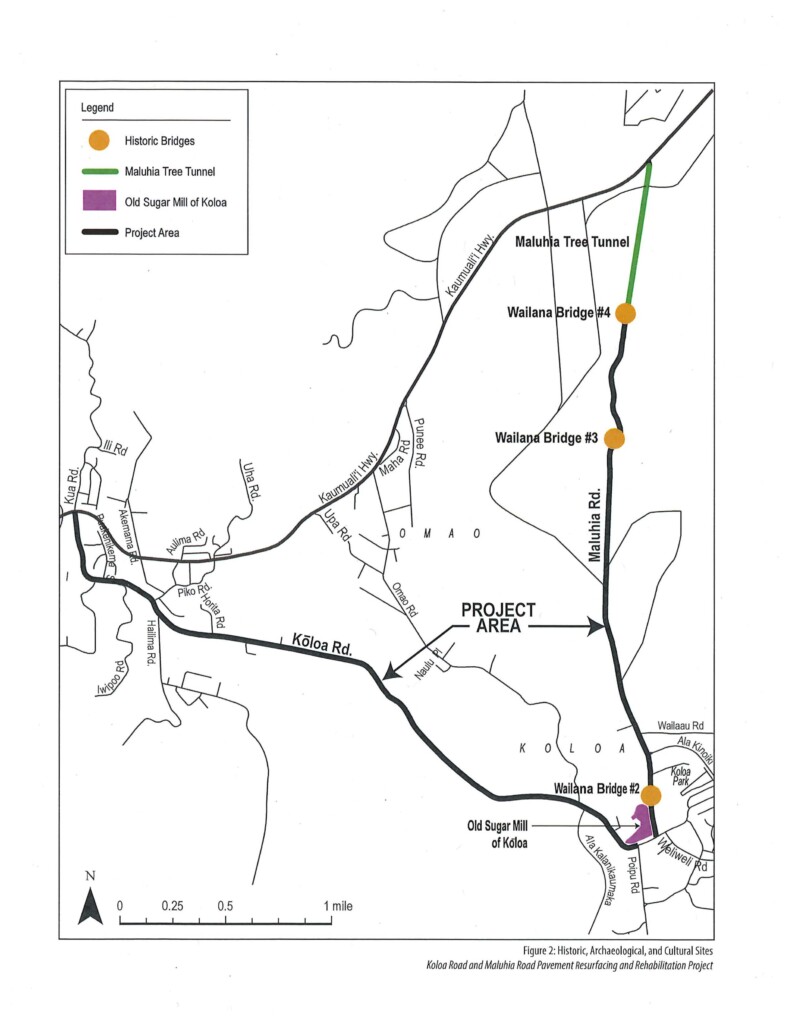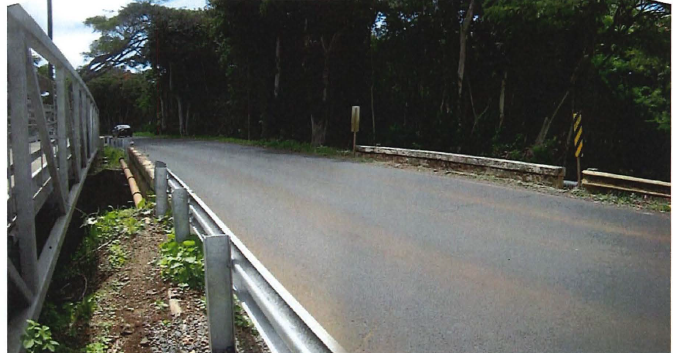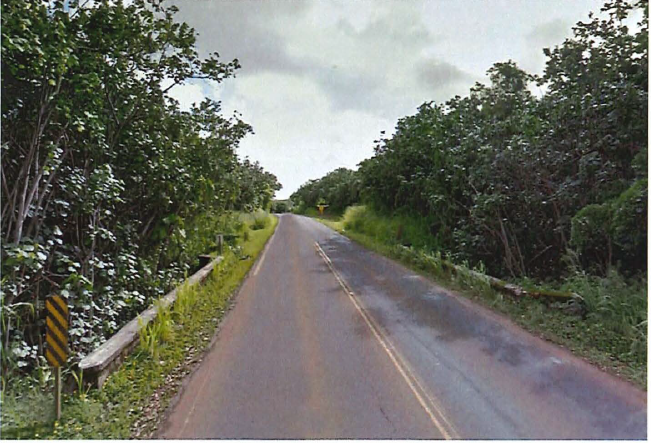Representation and expertise key to this positive preservation outcome
In June of 2018, the Kaua‘i County Department of Public Works issued a project notice for Section 106 consultation for the Kōloa Road and Maluhia Road Improvements Project. The project had the potential to adversely affect several historic resources.

The Resources
Maluhia Tree Tunnel
The famous Tree Tunnel, formed by rows of eucalyptus trees, borders a one mile segment along Maluhia Road from the Kaumuali’i Highway junction to Knudsen’s Gap. It’s a lush grove of over 500 trees estimated to be between 100 and 150 years old, dating back to around 1911. The most common explanation regarding the source of the trees is that Walter Duncan McBryde, a major sugar, pineapple, and cattle businessman, planted the trees as a gift to Kaua’i. Mr. McBryde was also in charge of the roads in the Kōloa District from 1900 to 1905. Eligibility for the Nation Register of Historic Places is undetermined at this time, however the County of Kaua‘i has recognized the Tree Tunnel as an “exceptional resource with historical or cultural value” since 1976. The tree tunnel is also identified as “K-2” under Section 22-5.4 of Article 5 “Preservation of Exceptional Trees” of the Kaua‘i County Ordinances.
Three Wailana Stream Bridges along Maluhia Road
The three bridges – Wailana Bridge No. 2, Wailana Bridge No. 3, and Wailana Bridge No. 4 are all located on Maluhia Road. Bridges No. 3 and No. 4 were both designed by Joseph H. Moragne and constructed in 1910 as part of the Kaua’i Belt Road, while Bridge No. 2 was designed by Sadaichi Dodo and constructed in 1936.
Bridges No. 3 and No. 4 are historically significant under as they represent the earliest Kaua’i County efforts to modernize the Kaua’i Belt Road, are the oldest extant bridges built by Kaua’i County, and are the only elements remaining that indicate the original alignment of the Kaua’i Belt Road north of Koloa.
Bridge No. 2 is significant for its association with early developments in concrete construction and as a good example of a 1930’s reinforced concrete girder bridge that is typical of its period.
HHF’s historical architect, Virginia Murison, conducted a detailed review of the project identifying issues of concern and made recommendations for alleviating potential adverse effects to the historic resources. This was followed by a meeting with the DPW project design team to review possible design revisions for the bridges. Ongoing consultation continued with DPW amending the bridge design and road project process based on HHF’s recommendations.
“We appreciate HHF’s meeting with the project design team (Jan. 4, 2019) to collaborate in identifying solutions that meet the project goals, while protecting and minimizing impacts to the historic resources.” ~ Lyle Tabata, Deputy County Engineer, County of Kauaʻi
HHF was pleased with the resulting design changes to protect the three historical bridges. In addition, key actions were added to the modified plan to protect the health of the trees during the widening project. These included protection of roots and trees during the construction process; the development of a Tree Preservation Plan to include Best Management Practices; prohibitions for driving over/or staging in the root area; consultation or monitoring by an arborist during work near the root system; post construction monitoring plan; and replanting if/where needed.
- Wailana Bridge #2
- Wailana Bridge #3
- Wailana Bridge #4
A Collaborative Approach is Essential
Feedback from the Kaua‘i County Department of Public Works affirms the importance and power inherent in a collaborative approach to recognize the goals of all participants in the consultation process and work toward the most favorable outcome for all parties.
“DPW appreciates HHF’s collaboration in identifying solutions that avoid, minimize, and mitigate effects to historic resources. We believe that consultation with your organization, re-evaluation of designs, and the modifications made as a result (in addition to the policies regarding discovery of archaeological materials and human remains) have allowed us to adequately address potential project impacts. ~ Lyle Tabata, County of Kaua‘i, Dept. of Public Works
TIMELINE
June 2018: Project Notice is issued for Section 106 Consultation, Kōloa Road and Maluhia Road Improvements Project, Lawai and Kōloa Ahupua’a, Kona District, Island of Kaua’i, State of Hawai’i.
July 2018: HHF submits comments as a consulting party making recommendations for changes to the proposed plan to avoid effects on the historic properties.
January 2019: HHF and Kaua‘i Department of Public Works meet with DPW’s designers to review project design for bridges.
Feb 2019: HHF responds to Kaua‘i DPW’s revised project plan with additional recommendations to further safeguard historic properties.
May 2019: As a result of consultation and HHF’s review and recommendations throughout the process, DPW revised the scope of the project removing the resurfacing and guardrail improvements that were proposed at Wailana Bridge No. 2, 3 and 4 and had the potential to adversely impact these historic bridges. The process also resulted in additional safeguards for the historic Eucalyptus trees lining the Maluhia Tree Tunnel during the widening project.
As this example illustrates, collaborative approaches that result in a mutually agreeable outcome are possible!





